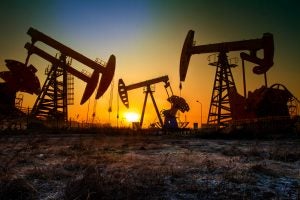 By Jon Goldstein and David Lyon
By Jon Goldstein and David Lyon
You can’t see what you don’t look for. That axiom is at the heart of the problem with the Environmental Protection Agency’s (EPA) methane emission estimates. It is also why a new analysis based on empirical data and cutting-edge science finds a far larger methane emissions problem in New Mexico than previously thought.
EPA estimates emissions based on data reported by oil and gas operators and a set of assumptions about leak rates called “emission factors.” EDF and our research partners decided to take a closer look at emissions in New Mexico, conducting direct measurements at well facilities and applying the latest science to understand leaks in the supply chain.
What did we learn?
EDF’s analysis shows that with an ongoing drilling boom, upstream oil and gas operations in New Mexico – the nation’s number three oil producer — emit more than double what EDF estimated just two years ago and approximately five times more than EPA data suggest. This large and growing methane waste problem totals over 1 million tons of methane emitted annually.
New Mexico’s million-ton methane problem Share on XBecause methane is the main component of natural gas and a potent climate pollutant, that much waste could more than meet the annual heating and cooking needs of every home in New Mexico and carries the same near-term climate impact as 22 coal-fired power plants.
This much pollution also poses significant health risks to communities near oil and gas operations, like San Juan and Eddy Counties, making breathing harder for vulnerable communities like children, the elderly and anyone who spends time outdoors. It also costs the state $43 million in revenue each year, money that could be going to schools, roads and other infrastructure.
Why does EPA’s data undercount methane emissions?
The EPA’s numbers are based on emissions reports that only the larger oil and gas operators – those producing more than 25,000 metric tons of carbon dioxide equivalent (CO2e) — must self-report to the EPA’s Greenhouse Gas Reporting Program (GHGRP). This means that a significant number of operators – who encompass roughly one-third of the state’s oil and gas wells – fall below the production threshold and do not report emissions.
Furthermore, operators must calculate their emissions using methods such as emission factors and engineering equations, rather than measurements. Although these approaches are traditionally used in emission inventories, numerous recent studies have shown they substantially underestimate total emissions, often dramatically.
That’s because the factors and equations don’t account for high, variable emissions such as those caused by malfunctioning equipment and other avoidable conditions. For example, emission factors are typically based on a small number of measurements that exclude the highest emitting sources. Emissions can be missed even when people are present on site – some leaks are hard to find unless you are diligently looking for them, and others are hard to accurately and safely measure with on-the-ground equipment.
In other words, EPA both isn’t looking comprehensively (because it doesn’t require reporting beneath its threshold) and isn’t looking accurately (because it relies on assumptions rather than measuring what is happening in the real world).
On the other hand, EDF’s estimates for New Mexico are based on a combination of recent peer-reviewed methods and new site-level emissions data from over 90 well pads in the Permian Basin. Those new Permian measurements are based on an EPA-developed approach that uses vehicles parked downwind of sites to quantify total methane emissions. This data, collected last summer by researchers from the University of Wyoming, finds that with increasing production in the Permian – now the most active oil and gas basin in the U.S. — comes a growing burden of methane pollution and waste in New Mexico.
What can be done?
While the Trump administration repeals and weakens federal methane rules as quickly as it can, the state of New Mexico, under new Gov. Michelle Lujan Grisham, is committed to strong action. She has ordered her state agencies to develop strong rules to cut oil and gas methane emissions as quickly as possible.
That can deliver big benefits for New Mexico communities, and work to stop the nearly $43 million of lost taxes and royalties associated with methane waste. That’s enough money to boost pre-k enrollment by 80% and give 7,300 more New Mexican kids access to quality early childhood education.
To be effective, these regulations should require nationally leading controls that will minimize this emission and waste problem, including requirements like frequent leak inspections, flaring reductions, and lower emitting pumps, valves and controllers. Fortunately, these policies have proven to be impressively cost-effective, pulling more methane out of the atmosphere and keeping more natural gas in the sales line.
Strong rules can help dramatically cut New Mexico’s methane waste and pollution problem. EDF will be engaging with state regulators and stakeholders in the months ahead to create a regulatory framework that can cost-effectively attack this problem, as well as protect the state’s air and climate from oil and gas pollution.










